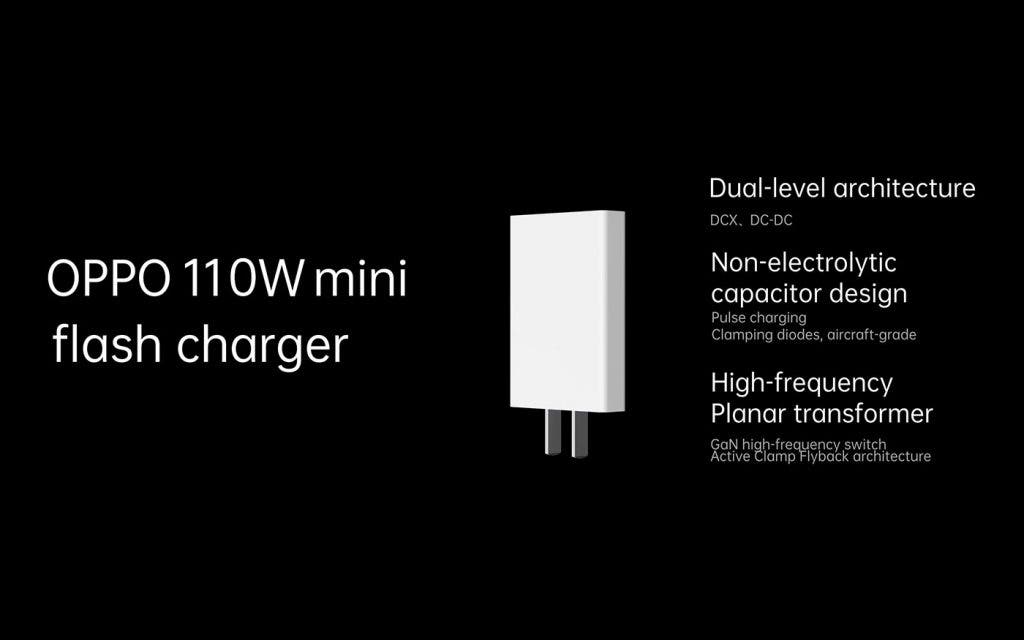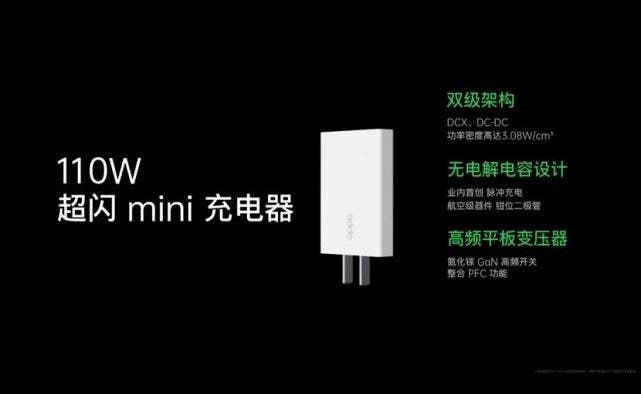At the OPPO next-generation super flash charging conference this afternoon, the company released a couple of charging solutions. The Chinese manufacturer unveiled the 125W super flash charging as well as the 65W AirVOOC wireless flash charging technology. Furthermore, Oppo also released two chargers. These include the 50W super flash charger and the 110W super flash mini charger.

For the first time, Oppo says it was able to increase the power of the miniature charger to exceed 100W. According to the company, it used an electroless capacitor design, pulse charging, and high-frequency flat transformer technology to reduce the number and volume of components in the charger. This charger places much emphasis on breaking the volume and efficiency limits of high-power chargers. Oppo had to use a groundbreaking two-stage architecture to achieve high-efficiency power conversion and temperature control.
According to reports, its USB-C interface supports mainstream charging protocols such as VOOC, PD, PPS, and QC. It also supports up to 65W PD&SuperVOOC, 110W PPS, 36W QC, and 30W VOOC. With these, this charger can charge most electronic devices on the market. This obviously includes OPPO mobile phones, smart devices that support PD/QC, and office laptops that support PD.
The mini 50W and 110W Flash chargers use GaN(Gallium Nitride) for conducting high voltages and currents at a small size. Unfortunately, the company did not announce the price and availability of this device.
How is the Oppo 110W super flash mini charger so small
Firstly, we should know that the 110W mini flash charger is built upon the combination of laminate and compact structures. This eventually minimizes its size to just 35.76 cm³ – similar to the size of a normal 18W charger. Oppo’s 110W mini flash charger had a significant breakthrough in the size limit and efficiency of high-power adapters. However, how did Oppo manage to do this? Here are a few points to give us a glimpse of what Oppo actually did
- It eliminated the electrolytic capacitors and use aviation-grade clamping diodes, reducing the size of the motherboard by 52%.
- It introduced gallium nitride high-frequency power devices in place of the silicon-based MOSFETs to meet the needs of small-volume high-frequency switching. This ensured that the flat-panel transformers thinned to 8mm.
- The new Active Clamp Flyback topology control structure, “clear” the voltage and current before and after the switch action, to achieve zero electricity
Also, note that the Oppo 110W super flash charger is simply an improvement of the 50W mini SuperVOOC. Thus, the above points also apply to the 50W mini SuperVOOC





